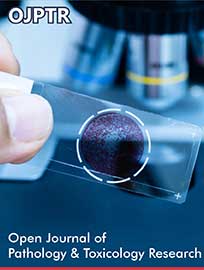 Research Article
Research Article
Bioaccumulation and Biochemical Studies of Toxicants in Fish on AChE
Aradhna Gupta1, Nikhat J Siddiqi2, and Bechan Sharma3*
1Department of Biochemistry, PDM University, India
2Department of Biochemistry, King Saud University, Riyadh, Saudi Arabia
3Department of Biochemistry, University of Allahabad, India
Bechan Sharma, Department of Biochemistry, University of Allahabad, India.
Received Date:January 03, 2022; Published Date: January 24, 2022
Abstract
The rivers Ganges have been worst victim of environmental degradation as many hazardous and toxic substances are carried through sewage and industrial effluents to open water bodies. The present paper deals with the study related to occurrence and bioaccumulation of some organochlorine pesticides and heavy metals in the riverine sediment and the muscles of two cat fish species, Channa punctatus and Aorichthys aor procured from Ganges at Allahabad. The levels of these toxicants were determined to find out the extent of contamination and accumulation in the aforesaid samples from Ganges. Their contents in decreasing order were found to be HCH>DDT>heptachlor>endosulphan>aldrin>endrin for pesticides and Zn>Pb>Cr>Cu>Cd for heavy metals. Though level of these detected were under the permissible level but the results were indicative of rising trend in these samples. The in vivo effect of subacute concentrations of toxicants were also evaluated by treating fish with sublethal levels for 96h and assaying the activity of acetylcholinestearse (AChE) isolated from the muscle of the fish. The data indicated significant alterations in the levels of AChE, a known biomarker of toxicity, which exhibited direct correlation with the doses applied. The results could be used as an indicator for better environmental management with special reference to the water quality and human health.
Keywords: Organochlorine pesticides (OCP); Heavy metals; Accumulation; Toxicity; Acetylcholinesterase (AChE)
-
Aradhna Gupta, Nikhat J Siddiqi, and Bechan Sharma. Bioaccumulation and Biochemical Studies of Toxicants in Fish on AChE. Open J Pathol Toxicol Res. 1(1): 2021. OJPTR.MS.ID.000505.
-

This work is licensed under a Creative Commons Attribution-NonCommercial 4.0 International License.






